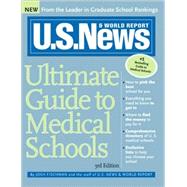
| Foreword | p. v |
| Introduction | p. ix |
| A Med Student's First Year | p. 1 |
| Which Is the Right School for You? | p. 7 |
| Inside Five Top Schools | p. 21 |
| Getting In | p. 35 |
| Finding the Money | p. 47 |
| What If You Don't Get In? | p. 55 |
| Other Choices, Other Paths | p. 61 |
| The U.S. News Insider's Index: How Do the Schools Stack Up? | p. 77 |
| Which are the hardest and easiest medical schools to get into? | p. 78 |
| Who's the priciest? Who's the cheapest? | p. 81 |
| Which schools award the most and the least financial aid? | p. 84 |
| Which are the largest and smallest medical schools? | p. 87 |
| Which get the most research money? Which get the least? | p. 90 |
| Whose graduates have the most debt? The least? | p. 93 |
| Which schools have the most minority students? The fewest? | p. 95 |
| Which schools turn out the most primary care residents? The fewest? | p. 98 |
| Which schools' grads are most likely to stay in state? The least likely? | p. 100 |
| The U.S. News & World Report Ultimate Medical School Directory | p. 103 |
| How to Use the Directory | p. 104 |
| Directory | p. 106 |
| Alphabetical Index of Schools | p. 364 |
| Index of Schools by State | p. 365 |
| About the Authors and Editors | p. 368 |
| Table of Contents provided by Ingram. All Rights Reserved. |
The New copy of this book will include any supplemental materials advertised. Please check the title of the book to determine if it should include any access cards, study guides, lab manuals, CDs, etc.
The Used, Rental and eBook copies of this book are not guaranteed to include any supplemental materials. Typically, only the book itself is included. This is true even if the title states it includes any access cards, study guides, lab manuals, CDs, etc.
Excerpted from U. S. News Ultimate Guide to Medical Schools, 3E
All rights reserved by the original copyright owners. Excerpts are provided for display purposes only and may not be reproduced, reprinted or distributed without the written permission of the publisher.